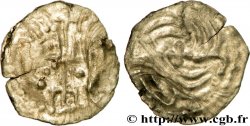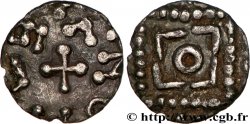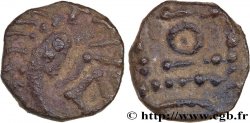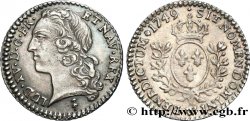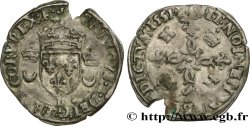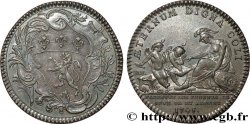v55_0615 - ENGLAND - ANGLO-SAXONS Sceat continental à l’oiseau, Série E, variété K
MONNAIES 55 (2012)
Starting price : 200.00 €
Estimate : 300.00 €
Realised price : 235.00 €
Number of bids : 3
Maximum bid : 235.00 €
Starting price : 200.00 €
Estimate : 300.00 €
Realised price : 235.00 €
Number of bids : 3
Maximum bid : 235.00 €
Type : Sceat continental à l’oiseau, Série E, variété K
Date: c. 695-740
Mint name / Town : Dorestad ou Quentovic
Metal : silver
Diameter : 12 mm
Orientation dies : 1 h.
Weight : 1,11 g.
Rarity : R2
Coments on the condition:
Très belle petite monnaie, bien frappée et centrée, sur un flan un tout petit peu court. Très belle patine sur des reliefs très saillants et une partie du brillant de frappe
Catalogue references :
Obverse
Obverse legend : ANÉPIGRAPHE.
Obverse description : Un oiseau de profil à droite ; une petite croisette sous la tête.
Reverse
Reverse legend : TRACES DE LÉGENDE.
Reverse description : Carré perlé, avec un annelet pointé au centre ; dans les angles, quatre traits horizontaux.
Commentary
Bien que traité “à la mérovingienne”, l’oiseau du droit prend sans doute son inspiration dans le bestiaire des monnaies gauloises (cf. les bronzes à l’aigle des Carnutes ou des Sénons). D. M. Metcalf illustre le bronze LT. 6108 comme prototype (cf. page 206 de son ouvrage). Cet exemplaire a la particularité d’avoir deux petits globules en cantonnement de la croix, sous la tête de l’oiseau.
Although treated “in the Merovingian style”, the bird of the right undoubtedly takes its inspiration from the bestiary of Gallic coins (cf. the bronze eagles of the Carnutes or the Senones). DM Metcalf illustrates the bronze LT. 6108 as a prototype (cf. page 206 of his work). This example has the particularity of having two small globules in cantonment of the cross, under the head of the bird
Although treated “in the Merovingian style”, the bird of the right undoubtedly takes its inspiration from the bestiary of Gallic coins (cf. the bronze eagles of the Carnutes or the Senones). DM Metcalf illustrates the bronze LT. 6108 as a prototype (cf. page 206 of his work). This example has the particularity of having two small globules in cantonment of the cross, under the head of the bird







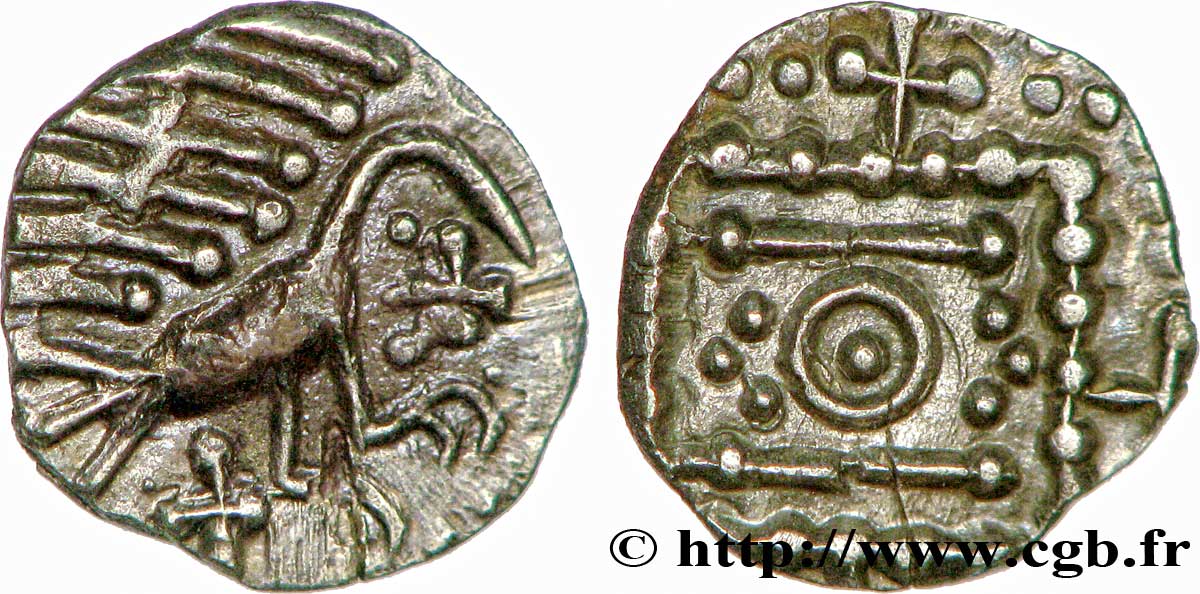
 Report a mistake
Report a mistake Print the page
Print the page Share my selection
Share my selection Ask a question
Ask a question Consign / sell
Consign / sell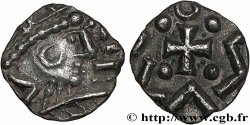
 Full data
Full data